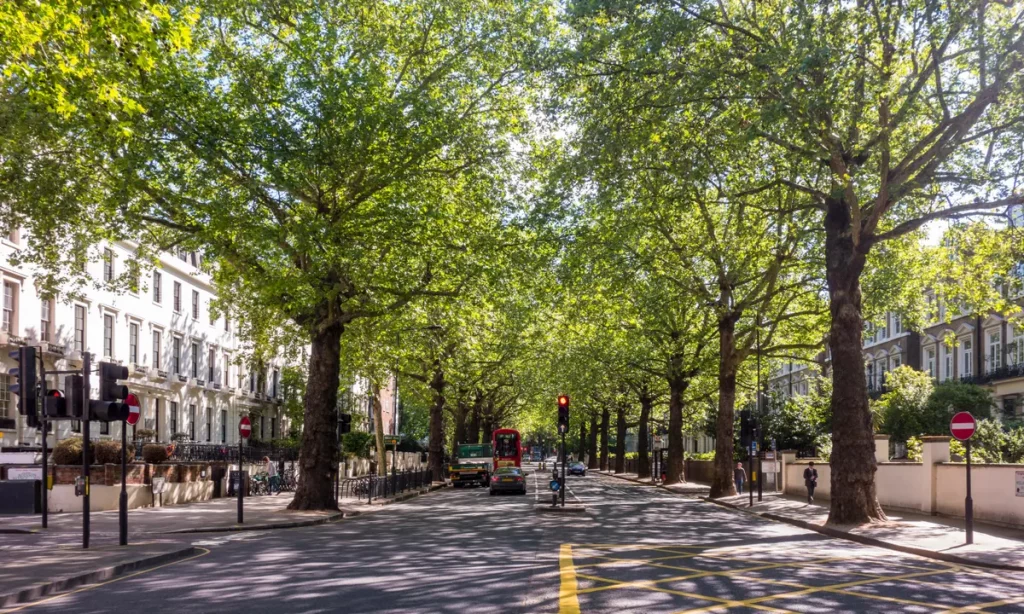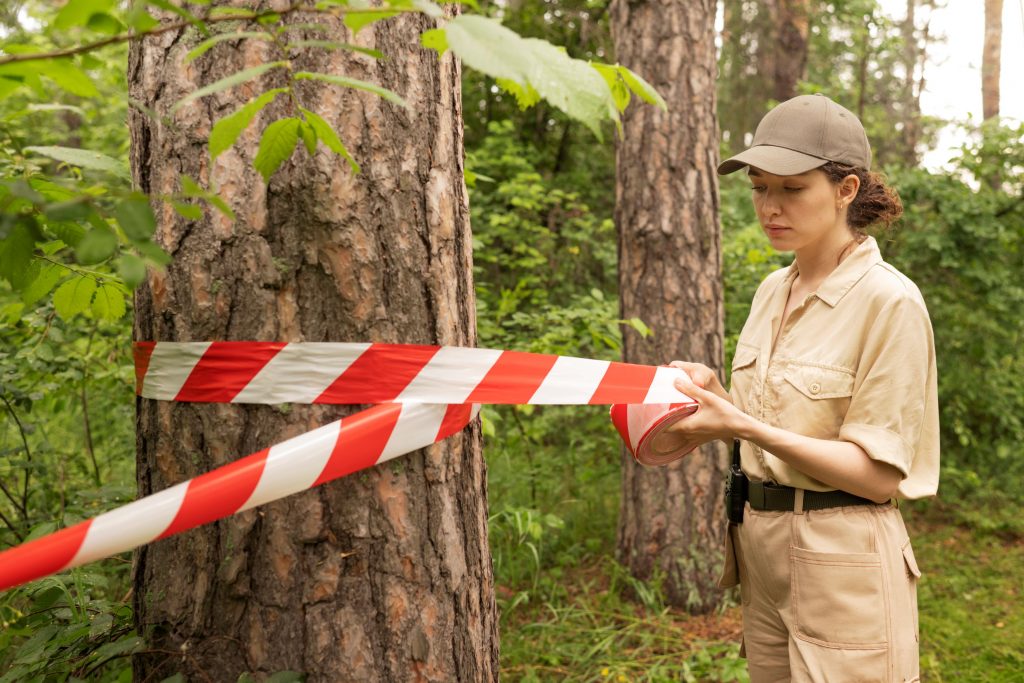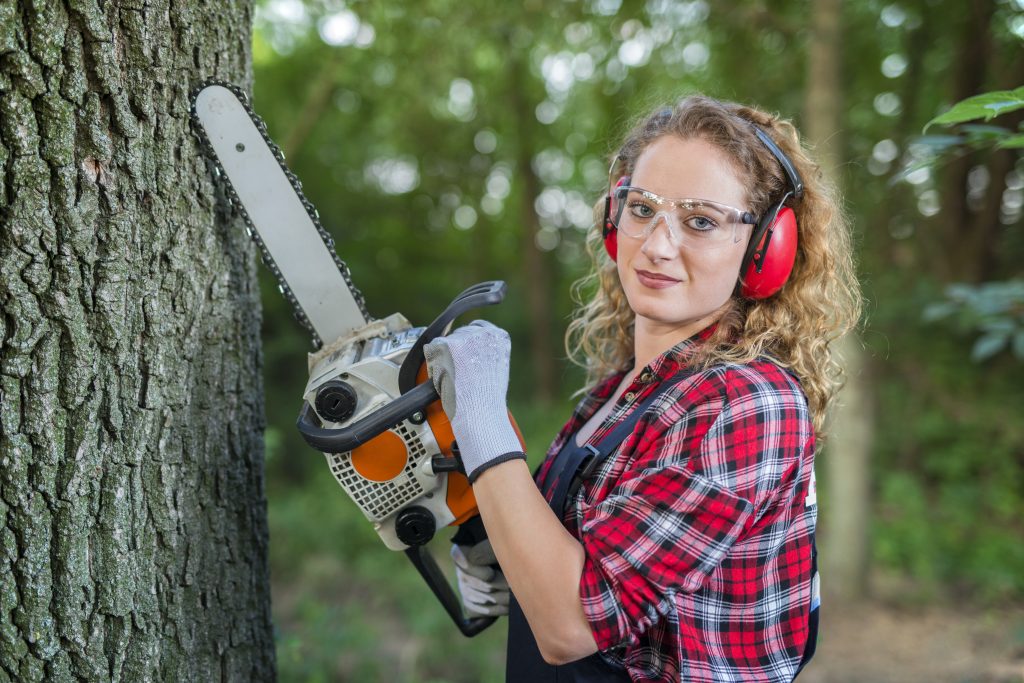THE BENEFITS OF USING TREES FOR CARBON SEQUESTRATION
THE BENEFITS OF USING TREES FOR CARBON SEQUESTRATION
Carbon sequestration is a natural or artificial process by which carbon dioxide (CO2) is captured from the atmosphere and stored in a long-term reservoir to mitigate its impact on the global climate. It is a crucial strategy in addressing climate change and reducing the concentration of greenhouse gases in the atmosphere. Here’s how carbon sequestration works and why it’s important:

-
Natural Carbon Sequestration:
- Photosynthesis: Trees, plants, and phytoplankton absorb CO2 from the atmosphere during photosynthesis. They use sunlight to convert CO2 into organic carbon compounds like sugars, starches, and cellulose.
- Ocean Carbon Pump: The world’s oceans play a significant role in sequestering carbon. Surface ocean waters absorb CO2, and marine organisms incorporate it into their shells and tissues. Eventually, some of this carbon sinks to the ocean floor, where it can be stored for thousands of years.
-
Artificial Carbon Sequestration:
- Forestry: Planting trees and managing forests sustainably can capture and store large amounts of carbon. Trees absorb CO2 during photosynthesis and store it in their trunks, branches, leaves, and roots.
- Soil Carbon Sequestration: Certain agricultural and land management practices, such as no-till farming, cover cropping, and afforestation (planting trees on previously unused land), can increase the carbon content of soils. Healthy soils store carbon in the form of organic matter.
- Carbon Capture and Storage (CCS): CCS is a technology that captures CO2 emissions from industrial processes and power plants before they are released into the atmosphere. The captured CO2 is then transported and stored in geological formations deep underground, preventing it from entering the air.
-
Importance of Carbon Sequestration:
- Climate Change Mitigation: Excess CO2 in the atmosphere is a primary driver of global warming and climate change. Carbon sequestration helps mitigate these effects by reducing atmospheric CO2 concentrations, which in turn helps stabilize global temperatures.
- Air Quality: Carbon sequestration can improve air quality by removing CO2, a greenhouse gas and air pollutant, from the atmosphere.
- Ecosystem Health: Natural carbon sequestration in forests, wetlands, and oceans supports healthy ecosystems and preserves biodiversity. It also helps maintain ecological balance and resilience.
- Sustainable Agriculture: Soil carbon sequestration practices not only capture carbon but also enhance soil fertility and water retention, making agriculture more sustainable and resilient.
- Regulatory Compliance: In some regions, businesses are required to offset their carbon emissions by participating in carbon trading or offset programs. Carbon sequestration projects can help these entities meet regulatory requirements.
Overall, carbon sequestration is a vital strategy for reducing the impacts of climate change, enhancing environmental health, and ensuring a more sustainable future. Sustainable land management practices, reforestation efforts, and technological innovations like CCS play critical roles in achieving effective carbon sequestration.
Importance of Addressing Carbon Emissions and Climate Change
Addressing carbon emissions and climate change is of paramount importance due to the profound and far-reaching impacts it has on the environment, human societies, and the planet as a whole. Here are several key reasons highlighting the significance of this issue:
- Global Warming: Excess carbon emissions, primarily in the form of carbon dioxide (CO2) from burning fossil fuels and deforestation, are the primary drivers of global warming. This results in rising global temperatures, leading to adverse effects such as heatwaves, droughts, and more frequent and severe weather events.
- Extreme Weather Events: Climate change is linked to an increase in extreme weather events, including hurricanes, wildfires, floods, and heatwaves. These events pose significant risks to human safety, infrastructure, and natural ecosystems.
- Sea-Level Rise: The melting of polar ice caps and the thermal expansion of seawater due to warming temperatures contribute to rising sea levels. This threatens coastal communities and ecosystems, leading to inundation, erosion, and displacement of populations.
- Economic Impact: Climate change-related events have substantial economic costs. Damage to infrastructure, decreased agricultural yields, increased healthcare costs due to heat-related illnesses, and the financial burden of disaster recovery all contribute to economic losses.
- Biodiversity Loss: Climate change disrupts ecosystems and habitats, leading to shifts in species distribution and threatening biodiversity. Many species face extinction as they struggle to adapt to rapidly changing conditions.
- Food and Water Security: Changing weather patterns, prolonged droughts, and increased temperatures can affect crop yields and water availability. This jeopardizes food security and can lead to conflicts over resources.
- Health Impacts: Climate change can exacerbate health issues. Heatwaves, the spread of diseases carried by vectors like mosquitoes, and reduced air quality due to wildfires and air pollution can harm human health.
- Social Disruption: Climate change-induced events can lead to forced migration, displacement of communities, and social disruption. This can strain resources, increase the risk of conflict, and create humanitarian crises.
- Environmental Feedback Loops: Positive feedback loops, such as the thawing of permafrost releasing methane (a potent greenhouse gas) and the reduction of reflective ice and snow surfaces, can accelerate climate change beyond current projections.
- Global Equity and Justice: Climate change disproportionately affects vulnerable and marginalized populations who often contribute the least to emissions. Addressing climate change is an issue of global equity and justice.
- International Cooperation: Climate change is a global challenge that requires international collaboration. Agreements like the Paris Agreement provide a framework for countries to work together to limit global warming and mitigate its effects.
- Economic Opportunities: Transitioning to a low-carbon economy, investing in renewable energy, and adopting sustainable practices can stimulate economic growth, create jobs, and foster innovation.
- Resilience and Preparedness: Taking action to address climate change enhances societal resilience and preparedness for future challenges, whether they are related to climate or other risks.
Addressing carbon emissions and mitigating climate change is not only an ethical imperative but also an urgent necessity to safeguard the well-being of current and future generations. By reducing emissions, transitioning to sustainable practices, and investing in climate resilience, we can mitigate the worst impacts of climate change and create a more sustainable and equitable world.
Role of Trees in Carbon Sequestration
Trees play a vital role in carbon sequestration, which is the process of capturing and storing carbon dioxide (CO2) from the atmosphere. This process is critical for mitigating climate change and reducing the concentration of greenhouse gases in the atmosphere. Here’s how trees contribute to carbon sequestration:

- Photosynthesis: Trees capture CO2 from the atmosphere during photosynthesis, a natural process where they use sunlight to convert CO2 and water into carbohydrates and oxygen. This stored carbon becomes part of the tree’s biomass, including leaves, branches, trunks, and roots.
- Storage in Wood: The carbon captured by trees is primarily stored in their woody biomass. Over time, as trees grow, they accumulate more carbon in their trunks and branches. Older, larger trees can store substantial amounts of carbon.
- Soil Carbon: Trees also contribute to carbon sequestration in soils. As leaves, branches, and other organic materials fall to the ground, they decompose and add carbon to the soil. Additionally, the fine roots of trees contribute to soil carbon storage.
- Long-Term Storage: Trees are long-lived organisms, and the carbon they sequester can remain stored for decades to centuries, depending on factors like tree species, environmental conditions, and land management practices.
- Forest Ecosystems: Trees in forests interact with other vegetation, soil, and wildlife. Healthy forest ecosystems support diverse plant and animal species, which contribute to overall biodiversity and ecosystem resilience.
- Reforestation and Afforestation: Planting trees in areas that were previously devoid of trees (afforestation) or have experienced deforestation (reforestation) can significantly increase carbon sequestration and help restore damaged ecosystems.
- Urban Trees: Trees in urban areas play a valuable role in carbon sequestration. They help offset carbon emissions from buildings and vehicles and improve air quality in cities.
- Climate Change Mitigation: By capturing and storing carbon, trees help reduce the concentration of CO2 in the atmosphere, which mitigates global warming and its associated impacts, such as rising temperatures and extreme weather events.
- Carbon Offset Programs: Trees are often used in carbon offset programs where organizations or individuals invest in tree planting and reforestation projects to compensate for their own carbon emissions.
- Adaptation to Climate Change: Forests provide resilience against climate change by acting as buffers against extreme weather events, protecting watersheds, and supporting local communities through natural resources.
It’s important to note that the effectiveness of trees in carbon sequestration depends on various factors, including the species of trees, environmental conditions, forest management practices, and the age of the trees. Sustainable forest management and responsible land use practices are crucial to maximize the carbon sequestration potential of trees and forests.
In summary, trees are powerful natural allies in the fight against climate change. Their ability to capture and store carbon makes them essential contributors to carbon sequestration efforts and vital components of global efforts to reduce greenhouse gas emissions.
About Murray, Utah
Murray is a city situated on the Wasatch Front in the core of Salt Lake Valley in the U.S. state of Utah. Named for territorial governor Eli Murray, it is the state's fourteenth largest city. According to the 2020 census, Murray had a population of 50,637. Murray shares borders with Taylorsville, Holladay, South Salt Lake and West Jordan, Utah. Once teeming with heavy industry, Murray's industrial sector now has little trace and has been replaced by major mercantile sectors. Known for its central location in Salt Lake County, Murray has been called the Hub of Salt Lake County. Unlike most of its neighboring communities, Murray operates its own police, fire, power, water, library, and parks and recreation departments and has its own school district. While maintaining many of its own services, Murray has one of the lowest city tax rates in the state.
Neighborhoods in Murray, Utah
Murray Oakes, Grant Park, Southwood Park, Murray Park, Murray Park Restrooms, Willow Pond Park, Neighborhood Veterinary Care
Things To Do in Murray, Utah
Bus Stops in Murray, Utah to Truco Services, Inc.
Bus Stop in Murray Central Station (Bay C) Murray, Utah to Truco Services, Inc.
Bus Stop in State St @ 4801 S Murray, Utah to Truco Services, Inc.
Bus Stop in Murray North Station Murray, Utah to Truco Services, Inc.
Bus Stop in State St @ 4949 S Murray, Utah to Truco Services, Inc.
Bus Stop in Murray Central Frontrunner/Trax Station Murray, Utah to Truco Services, Inc.
Bus Stop in Murray Blvd / Vine St (SB) Murray, Utah to Truco Services, Inc.
Bus Stop in State St @ 3925 S Murray, Utah to Truco Services, Inc.
Bus Stop in State St @ 4824 S Murray, Utah to Truco Services, Inc.
Bus Stop in State St @ 5223 S Murray, Utah to Truco Services, Inc.
Bus Stop in Murray Blvd / Allendale Dr (NB) Murray, Utah to Truco Services, Inc.
Bus Stop in Murray Blvd @ 5039 S Murray, Utah to Truco Services, Inc.
Bus Stop in State St @ 4721 S Murray, Utah to Truco Services, Inc.
Driving Directions in Murray, Utah to Truco Services, Inc.
Driving Directions from Woodruff Tree Trimming and Removal to 4640 Commerce Dr, Murray, UT 84107, USA
Driving Directions from Reliable Tree Care to 4640 Commerce Dr, Murray, UT 84107, USA
Driving Directions from Tree Pro-Tech to 4640 Commerce Dr, Murray, UT 84107, USA
Driving Directions from Prestige Tree And Landscape to 4640 Commerce Dr, Murray, UT 84107, USA
Driving Directions from Excellence Tree & Landscape to 4640 Commerce Dr, Murray, UT 84107, USA
Driving Directions from Amen Trees to 4640 Commerce Dr, Murray, UT 84107, USA
Driving Directions from Tim's Tree Care to 4640 Commerce Dr, Murray, UT 84107, USA
Driving Directions from Jordan Tree Service - Murray to 4640 Commerce Dr, Murray, UT 84107, USA
Driving Directions from Arbor Works to 4640 Commerce Dr, Murray, UT 84107, USA
Driving Directions from Diamond Tree Experts to 4640 Commerce Dr, Murray, UT 84107, USA
Driving Directions from Green Tree Arborist to 4640 Commerce Dr, Murray, UT 84107, USA
Driving Directions from TruCo Services to 4640 Commerce Dr, Murray, UT 84107, USA
Reviews for Truco Services, Inc. Murray, Utah
Emily Abercrombie
We had a great experience with TruCo! They were well priced, responsive and prompt. Michael was a pleasure to work with and gave us advice on which plants to put in where we took out our ugly old shrubs. I would highly recommend this company!!!
Michelle Turpin
TruCo Services gets 5 stars from us for customer service. We experienced a few issues with their services this last year and Rob Eccles in senior management, stepped in and immediately handled our issues. He was very committed to making sure they understood our expectations and would execute to make us happy.
Siobhan Billingsley
I work for a property management company and have the pleasure of working with Rob at a community in Sandy. He has been incredible to work with and always responds in a timely manner. He knows all the homeowners by name and address and is aware of all the "problem" areas when it comes to sprinklers. I never have to worry about following up with him because he always reaches out to provide me with an update. If you're looking to work with someone who takes pride in their job, is professional, and can solve the worst landscaping problems thrown your way, Rob is your guy. Thank you, Rob for all you do!
Jaime S.
We have used Truco at 2 of the complexes we manage, they have been great to work with. Good quality service, outstanding customer service with good communication. That's hard to find these days. I highly recommend them. Travis has been awesome to work with.
Jerusha Smart
We use TruCo for a majority of our properties and our home. While other landscaping companies we use come and go for various reasons like cost, communication issues, work performance, etc., TruCo is always consistent in price and work. Also, Rob is the best.

